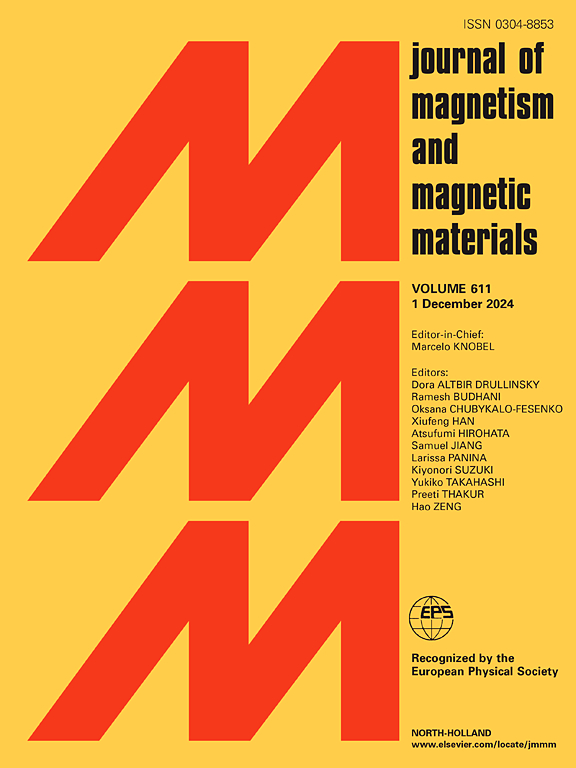Influence of silane coating and graphene oxide integration on the magnetothermal Behaviors of La1-xSrxMnO3 nanoparticles
IF 2.5
3区 材料科学
Q3 MATERIALS SCIENCE, MULTIDISCIPLINARY
引用次数: 0
Abstract
In this study, La1-xSrxMnO3 (x = 0.27, 0.3, 0.33) magnetic nanoparticles (MNPs) were synthesized and then these nanoparticles synthesized in the core–shell structure were coated with silane for potential magnetic hyperthermia applications. In order to provide support material for the coated magnetic nanoparticles, silane-coated hybrid magnetic nanoparticles were obtained by producing graphene oxide (GO) nanoflakes. The structural and magnetic properties and magnetothermal properties of these structures were investigated. It was observed that the structure of the silane-coated magnetic nanoparticles remained intact and did not show any degradation compared to the uncoated materials. In addition, the highest saturation magnetization (MS) value was observed in the sample doped with x = 0.30. This value indicated that the heating power would be higher than the other doped samples in the specific absorption ratio (SAR) measurements. In this context, the heating amount in the silane-coated samples showed a slight decrease compared to the uncoated samples. Despite the decrease in the SAR values of the integrated samples by incorporating GO into the coated MNPs, it is anticipated that effective results will be obtained for practical applications with the advantage of increasing the thermal conductivity of GO.
求助全文
约1分钟内获得全文
求助全文
来源期刊

Journal of Magnetism and Magnetic Materials
物理-材料科学:综合
CiteScore
5.30
自引率
11.10%
发文量
1149
审稿时长
59 days
期刊介绍:
The Journal of Magnetism and Magnetic Materials provides an important forum for the disclosure and discussion of original contributions covering the whole spectrum of topics, from basic magnetism to the technology and applications of magnetic materials. The journal encourages greater interaction between the basic and applied sub-disciplines of magnetism with comprehensive review articles, in addition to full-length contributions. In addition, other categories of contributions are welcome, including Critical Focused issues, Current Perspectives and Outreach to the General Public.
Main Categories:
Full-length articles:
Technically original research documents that report results of value to the communities that comprise the journal audience. The link between chemical, structural and microstructural properties on the one hand and magnetic properties on the other hand are encouraged.
In addition to general topics covering all areas of magnetism and magnetic materials, the full-length articles also include three sub-sections, focusing on Nanomagnetism, Spintronics and Applications.
The sub-section on Nanomagnetism contains articles on magnetic nanoparticles, nanowires, thin films, 2D materials and other nanoscale magnetic materials and their applications.
The sub-section on Spintronics contains articles on magnetoresistance, magnetoimpedance, magneto-optical phenomena, Micro-Electro-Mechanical Systems (MEMS), and other topics related to spin current control and magneto-transport phenomena. The sub-section on Applications display papers that focus on applications of magnetic materials. The applications need to show a connection to magnetism.
Review articles:
Review articles organize, clarify, and summarize existing major works in the areas covered by the Journal and provide comprehensive citations to the full spectrum of relevant literature.
 求助内容:
求助内容: 应助结果提醒方式:
应助结果提醒方式:


